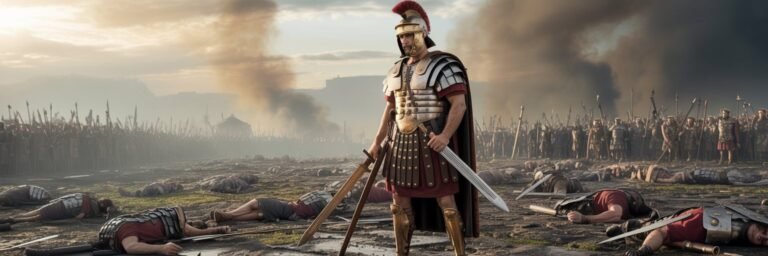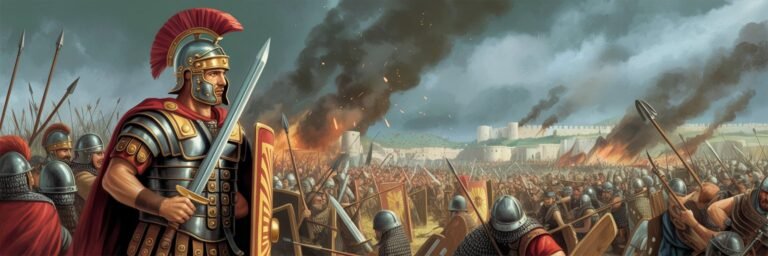INTRODUCTION
As we embark on a historical journey, we will dive into an era when empires were built and crumbled on the battlefield, where the rhythm of daily life was punctuated by the continuous demand of warfare. Ancient warfare, a period stretching from the beginning of recorded history to the Middle Ages, molded every facet of society, influencing culture, economy, and even mundane routines of everyday life. What was it like to live in such a time? This comprehensive exploration seeks to unravel the threads of everyday life during wartime in ancient civilizations.
HISTORICAL BACKGROUND
The dawn of civilization witnessed the birth of organised warfare; the establishment of city-states in Mesopotamia around 3000 BC marked the beginning of organized, large-scale conflicts. Inscriptions from ancient Sumer depict scenes of infantry clad in copper helmets bearing spears and shields marching into battle. Yet, beyond the battlefield were civilizations living regular lives, adapting and surviving amidst conflict.
Warfare was deeply entrenched in the daily life of ancient Egyptians. Citizens were often conscripted into the army during periods of mobilization. Still, everyday life continued, marked by the regular annual floods of the Nile, which dictated agricultural rhythms. The construction of impressive architectural projects, like the Giza pyramids, was mainly managed during periods of peace, acting as a socio-economic stabilizer by providing employment.
In Greece, the rise of city-states led to persistent rivalries and endless wars. The life of a citizen was split between peacetime activities such as farming or trade and periods of war. Greek warfare was seasonally organized, with most conflicts occurring in summer. This allowed synchronous farming and fighting.
THEORIES AND INTERPRETATIONS
Historians and archaeologists have long debated the profound and pervasive effects of warfare on everyday life in ancient civilizations. The mainstream theory suggests that warfare created a dichotomy of peace and war times, affecting social, political, and economic structures. However, an alternative theory posits that life was a seamless blend of both, with warfare being a seasonal activity embedded with agriculture and other socio-economic tasks.
Focusing on Greek warfare, Victor Davis Hanson highlighted warfare’s routine aspect in “The Western Way of War” (1989). He argued that battles formed a structured part of annual calendars, leaving the rest of the year for domestic activities, thus implying a clear compartmentalization in society’s functioning.
Meanwhile, Professor Dane Kunst of the University of California proposed a contrary theory, arguing that Greek society was “constantly mobilized.” In his view, warfare influenced everyday activities, like the very structure and layout of houses that were built to protect inhabitants from invasions.
MYSTERIES AND CONTROVERSIES
Unraveling the domestic life amidst ancient warfare remains a significant challenge due to the lack of written records or oral histories, leading to much speculation and controversies. The primary controversy revolves around the question of how much ordinary people were affected by war. While some scholars argue that warfare was a significant aspect affecting daily routines, others posit that thresholds between peace and war were definitive and discreet.
For example, the existence or absence of fortifications around ancient cities has been subjected to interpretations regarding warfare’s role. Some argue that fortified cities indicate continuous fear of war, affecting daily life. In contrast, others suggest that fortifications may have denoted symbols of power and prestige, not necessarily related to war.
SYMBOLISM AND CULTURAL SIGNIFICANCE
Symbols and cultural artefacts are crucial in studying the impact of warfare on everyday life during ancient times. They provide insights into how war was perceived and incorporated into societal fabric. It was common for war imagery to feature prominently in public spaces, festivals, and myths, reinforcing the significance of warfare in societal consciousness.
In Egypt, the Pharaoh was depicted as a mighty warrior, reinforcing his divine authority. The Triumph of Pharaoh reliefs regularly featured scenes of the king triumphing over enemies, embedding the aura of war within daily social and political life.
Similarly, in Greece, pottery painted with war scenes, epic poems like the Iliad that glorified valor in war, and statues of victorious generals were all part of everyday culture. Warfare in Greece was not only a physical conflict but also a cultural construct, deeply interwoven in daily life.
MODERN INVESTIGATIONS
Modern science has thrown new light on everyday life during ancient warfare. Sophisticated techniques like DNA analysis, isotopic measurement, and residue analysis unravel details about cuisine, disease, and mobility.
An archaeological investigation in Pompeii, for instance, revealed the presence of African food grains, indicating trade networks were active even during the turbulence of Roman conquests, indicating the resilience of daily life during warfare. Similarly, a recent study published in “Science Advances” (2020) revealed a high prevalence of Hepatitis B during the Warring States period in ancient China, suggesting disease dissemination as a potential consequence of warfare.
LEGACY AND CONCLUSION
Everyday life during ancient warfare offers profound insights into how societies functioned and evolved in response to conflict. The analysis does not deliver a monolithic perception but elucidates a spectrum of experiences across civilizations and periods.
The legacy of this era extends to our current world. The conception of war as an inherent part of life is echoed in modern societies’ perpetual conflicts. Warfare’s unmistakable imprint reaches down even into the rationality of physical structures; the design of ancient settlements – from barricades for deterring invaders to strategic placement of public spaces – resonate as defensible design principles in modern urban planning.
In conclusion, the exploration of everyday life during ancient warfare allows us to appreciate the resilience and versatility in human survival and advancement. Warfare, though destructive, acted as a crucible for cultural, social, and economic transformations that shaped society and continues to affect us today. By examining the connection between ancient people and warfare, we acquire a nuanced understanding of our history and an insightful mirror to our present. Despite the variegated cultural contexts of the ancient civilizations discussed, the one thread that weaves them together is the adaptability of the human spirit in the face of perpetual conflict.


